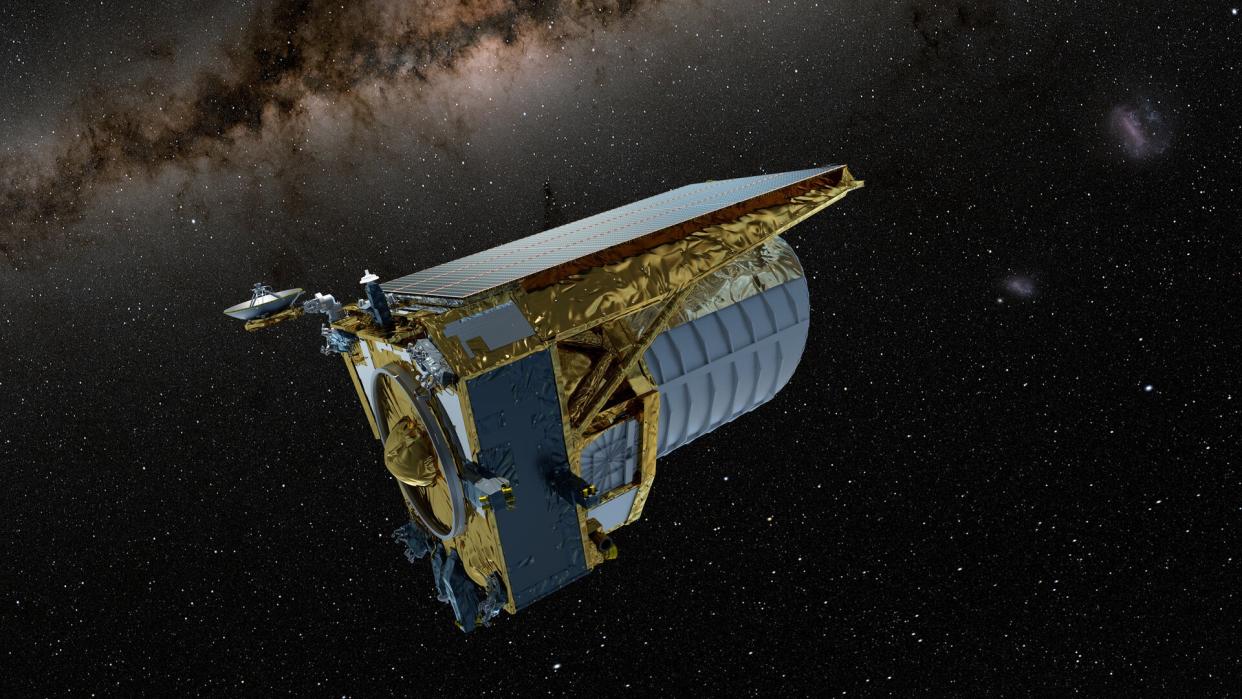Euclid 'dark universe' telescope's vision restored by deicing campaign

The Euclid "dark universe" probe's ailing vision has been restored after an experimental deicing campaign successfully evaporated ice from the telescope's mirrors, the European Space Agency (ESA) announced on Tuesday (March 26).
Ice layers as wide as a single DNA strand had collected on Euclid's mirrors, causing a small but progressive decrease in the amount of starlight the telescope was capturing, the agency said last week. So, scientists began "deicing" Euclid for the first time — from a million miles away — by heating one of its six mirrors that they strongly suspected was causing much of the issue.
The mirror was heated for 1.6 hours, raising its temperature from minus 232 degrees Fahrenheit (minus 147 degrees Celsius) to minus 171 degrees F (minus 113 degrees C). The visible instrument (VIS), a science instrument onboard Euclid that was collecting less starlight as a result of the ice issue, then began receiving 15% more light, confirming the test procedure's success, the agency said in an update on Tuesday.
Related: Euclid 'dark universe' telescope gets de-iced from a million miles away
"It worked like a charm!" Mischa Schirmer, a Euclid scientist who led the de-icing campaign, said in the statement. "I was certain that we would see a considerable improvement, but not in such a spectacular way."
ESA teams across the Netherlands, Germany and Spain collaborated with contractors Thales Alenia Space and Airbus Space on the campaign, the agency said. Scientists began warming the telescope when it was midnight at mission control to make sure they had constant contact with the spacecraft in case of anomalies.
"Thankfully, it all went as planned," said Micha Schmidt, the Euclid spacecraft operations manager. "When we saw the first analysis provided by the science experts, we knew that they would be very happy — the result was significantly better than expected."
Ice accumulation on mirrors isn't uncommon for space telescopes and therefore wasn't a total surprise to the Euclid mission team. It is close to impossible to prevent water droplets in the air from entering spacecraft during assembly, so "it was always expected that water could gradually build up and contaminate Euclid's vision," ESA officials said last week.
Although Euclid's mission team had tried to evaporate most of the water molecules by warming the telescope shortly after launch last year, "a considerable fraction" survived by being absorbed into the telescope's many layers of insulation, the agency had said. Once in the vacuum of space, those water molecules became free and froze onto the first surfaces they landed on, including the telescope's mirrors.
RELATED STORIES:
— Euclid 'dark universe' telescope reveals its 1st sparkling images of the cosmos (photos)
— Euclid 'dark universe' telescope is back on track after finding its guiding stars
— Who is the Euclid 'dark universe' space telescope named after?
Scientists don't know precisely how much moisture remains inside the spacecraft, so they expect the vision of Euclid — which aims to help astronomers better understand mysterious dark matter and dark energy — to dip again in the future.
"But it will be simple to repeat this selective decontamination procedure every six to 12 months and with very little cost to science observations or the rest of the mission," said Reiko Nakajima, a Euclid scientist at the University of Bonn in Germany.


